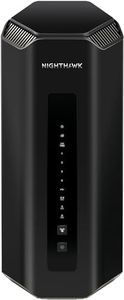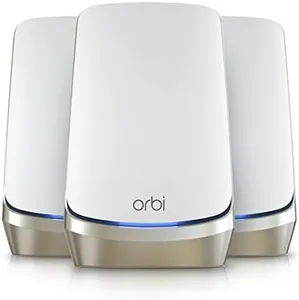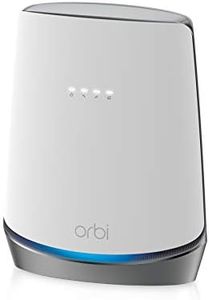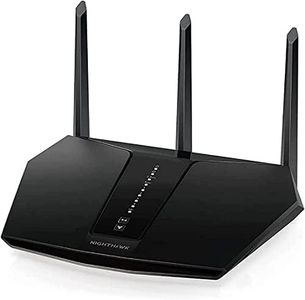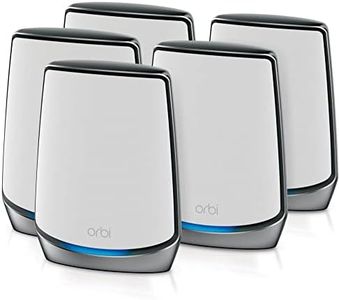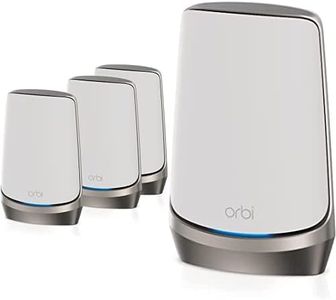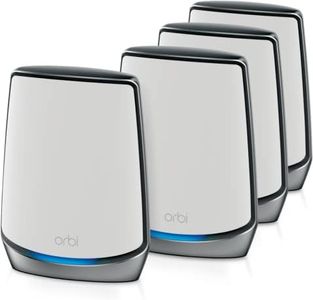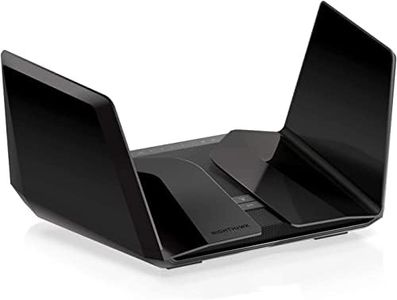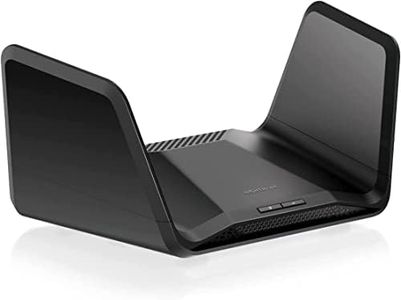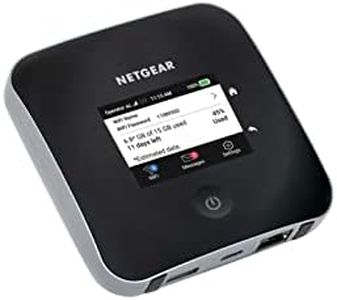We Use CookiesWe use cookies to enhance the security, performance,
functionality and for analytical and promotional activities. By continuing to browse this site you
are agreeing to our privacy policy
10 Best Netgear Routers
From leading brands and best sellers available on the web.Buying Guide for the Best Netgear Routers
When choosing a Netgear router, it's important to consider how and where you’ll be using it. Different homes and workspaces have different needs, so the right router for a big household filled with streaming devices will be very different from what’s needed in a small apartment or single-person office. Think about things like the size of the space you want to cover, the number of devices that will be connected, and what you'll be using the internet for—like streaming, gaming, or just web browsing. Understanding these basics will help you focus on the features and specifications that truly matter for your situation.Wi-Fi Standard (e.g., Wi-Fi 5, Wi-Fi 6)The Wi-Fi standard refers to the technology the router uses to deliver wireless internet. The most common ones you'll see are Wi-Fi 5 (also called 802.11ac) and Wi-Fi 6 (also called 802.11ax). Wi-Fi 6 is newer and offers faster speeds, better performance with lots of devices, and improved reliability. If you have many modern devices or live in a busy household, Wi-Fi 6 is ideal, while Wi-Fi 5 is still reliable for simpler setups or older devices.
Dual-band vs. Tri-bandRouters come with either dual-band or tri-band setup, which refers to the number of separate networks the router can broadcast. Dual-band routers use two frequencies (2.4 GHz and 5 GHz), which is usually enough for small to medium homes. Tri-band routers add an extra 5 GHz band and can handle more devices without slowing down, making them better for large households or users with many gadgets or heavy internet use like gaming or streaming.
Maximum Speed (Mbps or Gbps ratings)This spec shows the highest wireless speed the router can support, often expressed in Mbps or Gbps. High maximum speeds mean faster data transfer between your device and the internet, which benefits activities like HD streaming or online gaming. However, the actual speed you get depends on your internet plan and your device’s capability. For most people, picking a router with speeds above what your internet plan offers ensures some future-proofing, but super high numbers only matter if you have very fast internet and compatible devices.
Coverage AreaCoverage area tells you how much physical space the router can provide Wi-Fi for, usually measured in square feet or as the number of bedrooms/rooms covered. If you have a small apartment, a basic coverage router should be fine. For larger homes or areas with lots of walls and obstacles, a router with larger coverage, or even a mesh system, is better. Think about your home's size and layout when choosing coverage so you don’t end up with weak spots.
Number of Ethernet PortsEthernet ports let you connect devices directly to the router for stable, wired internet. This is important if you have PCs, gaming consoles, or streaming boxes that need reliable connectivity. The number of needed ports depends on how many devices you want to plug in—more ports give you more flexibility, but for mostly wireless homes, fewer ports may be sufficient.
Security FeaturesSecurity features protect your network from unwanted access or cyber-attacks. Basic routers offer WPA2 encryption, but advanced ones may have WPA3 support, guest networks, parental controls, or automatic security updates. If you have kids using the internet, value privacy, or want to keep smart home gadgets secure, prioritizing security features is a smart choice.
Ease of Setup and ManagementSome routers are easier to set up and manage thanks to simple apps or interfaces, while others may require more technical know-how. If you’re not tech-savvy or want quick troubleshooting, look for models advertised as easy to install or that offer strong customer support via apps or online guides. This helps ensure you can manage and fix your network with less hassle.

